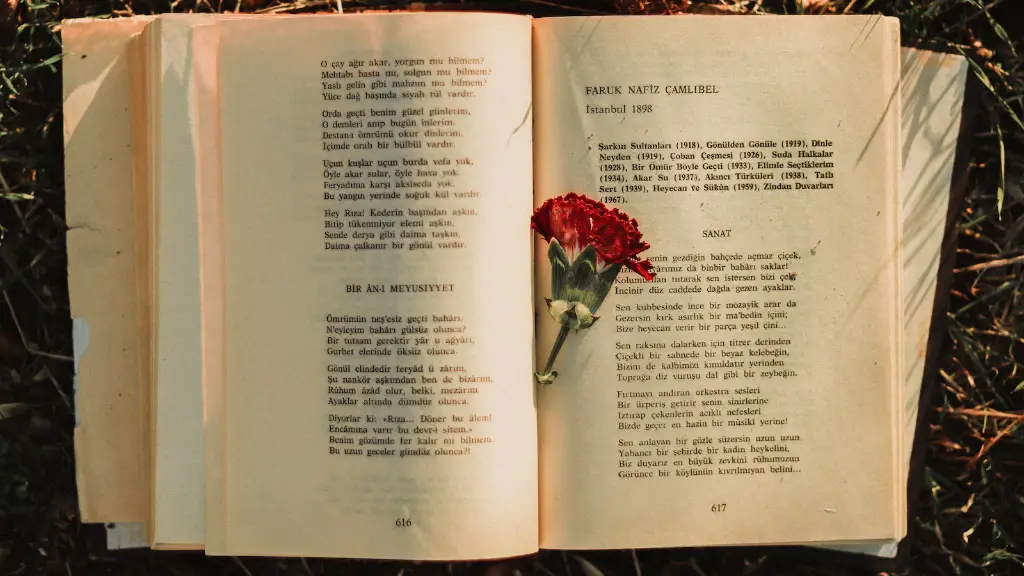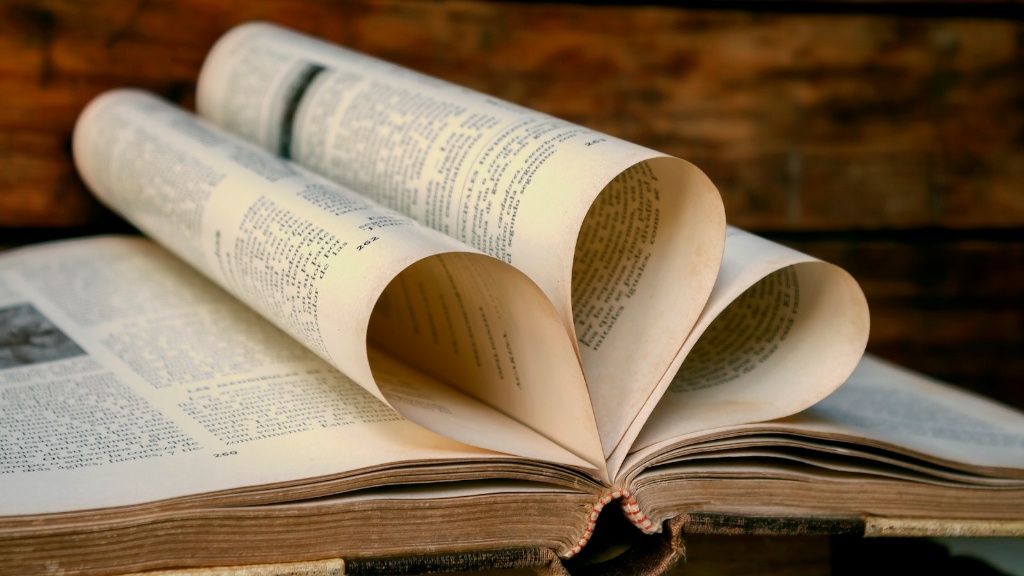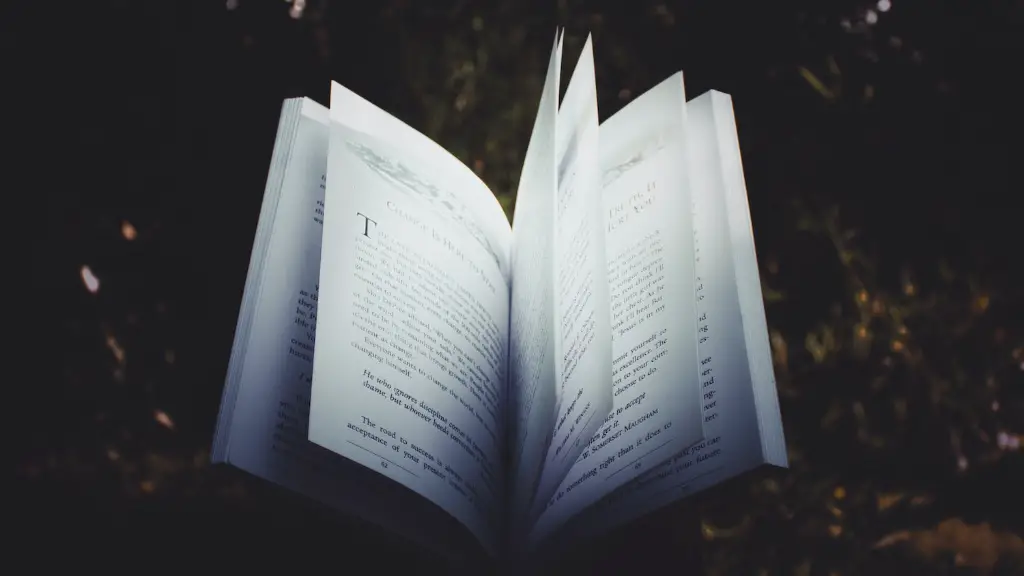Component I: The Basics
Shape poetry is a form of visually expressive written art where the poet contorts their words into shapes that often reflect a particular theme or have an aesthetically pleasing design. Typically done by writing individual words on separate lines, shape poetry has sustained its popularity for centuries.The literal juxtaposition of words and the physical representation of symbols make this art form an achievable and enjoyable approach to poetry.
Shape poetry is also often referred to as concrete poetry, pattern poetry or calligrammes, the latter having its roots in dadaism. While the practice of artfully laying out words can go back centuries, modern poets began documenting shape poetry in the 1800s.
The fundamentals of shape poetry are fairly straightforward, but there are a few points to consider if you’d like to embark on this creative journey. To begin, it’s best to choose a particular theme as the prominent topic of your poem. When you have a core concept, jot down words or phrases that fall in line with the overarching idea. You might even draw inspiration from those that have gone before you by reading shape poems from well-known authors.
After the thematic nucleus of your poem has been established, begin to arrange the words and phrases that have been listed. Visualize the form of your shape poetry, taking into consideration a combination of the spoken word, size and placement of each letter or phrase. You may also refine the layout of your words, considering indentations or other featured spacing.
Component II: Sentiments and Syntax
As a fledgling shape poet, it’s important to express your emotions in a meaningful way. Pay attention to written elements that carry moods, like puns, similes, metaphors and alliteration. By employing these techniques and more, your poem will have added depth, allowing for a richer experience for the audience.
Sentiments should be expressed not only on the surface level but also underneath. Think of the motions the words arouse and the kind of story the poem tells. Then use language to further emphasize those sentiments. To illustrate further, if your shape poem is about sadness, perhaps the lines should be longer, going diagonally, to reflect said emotion.
Written text that carries three of more syllables equates to a stronger overall impact. A poem that is built up of such words can be described as vigorous. Such words can provide your poem with intensity, ultimately aiding your readers in connecting with the piece on a deeper level.
Component III: Focus On Structure
When brainstorming key elements of shape poetry, structure should be at the forefront. Is the shape focused on: long, short, or tightly knit lines? You’ll also want to pay attention to the size of the letters; some poets may choose to accentuate certain words throughout their poem by enlarging the text.
Create a distinguishable shape and avoid producing letters that’re too cluttered, as this may diminish the overall appearance. Additionally, use color to your advantage. A good rule of thumb is to avoid utilizing any more than three, so as to maintain the crispness of the poem. As far as the general framework of the poem, you might start by getting a pencil and paper, and sketching out the layout that comes to mind. This way, you have something to refer back to as you type and shuffle each letter around.
Component IV: Point of View
The audience’s POV is another key point to consider when writing shape poetry. While some poems are self-explanatory with no narrative to be followed, others require a specific POV that encourages readers to digest the piece in a certain way. Such poems almost require viewers to stand directly underneath the creation to get a true sense of the piece.
The audience’s point of view can be the determining factor in how the poem is executed in the eyes of the reader. Furthermore, different POVs may create varying levels of interest in your readers; therefore, it’s important to have an underlying POV that’s showcased in the poem.
Component V: Editing
Like any artistic piece, it’s important to keep revising and editing your shape poem before it’s complete. Maintaining an organized flow is key, while still allowing creative license. Read your poem over and over again until you’re satisfied with the finished product, and if you still feel something is off or missing, take the extra time to tweak it.
Focus on making sure that each element of the poem works in harmony. The poem should tell a story and stand test of time in terms of its visual appeal. Take note on how every word interacts with one another and how a reader may instinctively read the poem, noting off any errors as you go along.
Component VI: Revisions and Redaction
The redaction process of shape poetry is incredibly important for any poet looking to make his or her work stand out from the rest. Not all poets follow these rules of thumb, but for individuals who’re looking to create an audio-visual poem, redaction should be considered.
Writing with fewer words is more effective in shape poetry. Eliminate any terms or phrases that you feel don’t add to the poem’s meaning. If a particular line has three or fewer words and involves two answers, or two-words that are in opposition with each other, then it is suitable for redaction.
One of the motivations behind redaction is to make certain words, or groups of words, stand out in a particular poem. Achievable through the use of italics or capital letters, this technique has proven to be effective in making a shape poem much more appealing to readers.
Component VII: Tone and Tempo
Setting and maintaining a good tone throughout your shape poem is essential for any poet looking to achieve an interesting and stimulating piece. Whether it’s a mournful elegy or a lighthearted sonnet, the tone has to be consistent and intentional.
The tone of the poem should exude emotion, as it’s one of the main reasons readers are compelled to read shape poetry. Utilizing language that evokes particular feelings is paramount in shaping the poem’s emotional atmosphere.
Likewise, you’ll want to ensure that you maintain a steady tempo throughout the poem. From the beginning to the end, keep track of the pacing and avoid monotonous compositions. Instead, mimic the strong and steady beats of a heartbeat.
Component VIII: Typography and Visuals
When the words have been laid out meaningfully, the poem can become elevated even further with the use of typography and visuals. Integrating recent advancements in typography can result in aesthetically pleasing text, a concept that have been practiced by poets for ages.
Though the most foundational concept of shape poetry is the arrangement of words into readable shapes by hand, advances in technology have enabled poets to craft their creations digitally. Whether it’s through the use of specific fonts or the alteration of individual parts of the letters, the options are plenteous.
In regards to visuals, carefully selected words or phrases can be crossed out, italicized, or bolded to give the reader hints along the way. Popular programs like Adobe InDesign and Photoshop also allow poets to insert images, illustrations, or symbols as a way to further explain the piece – each addition or change altering the overall feel of the poem.
Component IX: Themes and Characterization
The success of the poem is a product of the theme and the characters which it encompasses. It’s important to carefully choose a theme that can be explored deeply, allowing readers to get the full potential from your shape poem.
As a theme will likely carry a plot, plot elements should be remembered. Characters are integral to such a storyline, as they’re used to representing abstract concepts and thus implementing more layers to your poem. Adhering to a theme in the spirit of the prompt and creating characters is the optimal way to bring a shape poem to life.
In addition to creating characters that have background stories, shape poets should focus on the personification and characterization that comes into play when forming the structure of the piece. Now and then, the structure can almost tell a story itself.
Component X: Viewer Impact
The main goal of any shape poem is to create a visual masterpiece that carries an emotional context and is artistically pleasing. Through a combination of creative composition and effective redaction, poets are given the power to influence the viewer’s reaction.
The key to impacting a reader lies in the way the poem is technically arranged. Having a piece which captivates the audience’s attention for the length of time that lasts is beneficial for a shape poet. Paying attention to the spacing, length, typeface, and orientation of the poem each play a huge part of the overall success of the piece in terms of viewer impact.
Long, drawn out letters symbolize a slower tempo and a more thoughtful feel, while smaller letters can more easily convey intense emotion. Where these characters and phrases are placed on the page can also tell a story and provide an additional layer for the viewers to ingest.
Overall, the impact of the poem is based on the fact that the readers are engaged and motivated to observe the words and phrases with new clarity. If the poem successfully captures their attention and creates the desired mood, then that poet has inarguably produced an effective shape poem.


